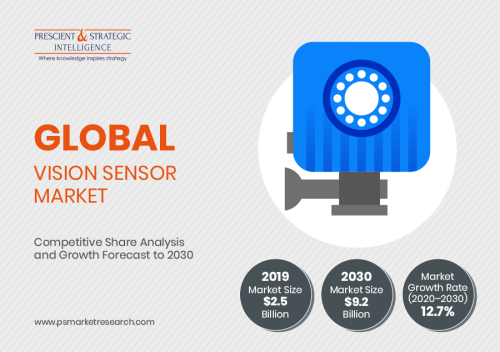Around the world, the manufacturing sector is growing to cater to the rising needs of the booming population, which will touch 9.7 billion in 2050, as per the United Nations (UN). Though it was electricity that made modern manufacturing possible, it was electronics and semiconductors that truly revolutionized it. Earlier, the manufactured projects were inspected by hand and the naked eye, with ‘OK’ being stamped on them, once approved. Today, sophisticated sensors and a combination of electronic systems accomplish this task.
With rapid advancements in industries, the vision sensor market size will increase from $2.5 billion in 2019 to $9.2 billion by 2030, at a healthy 12.7% CAGR between 2020 and 2030, says P&S Intelligence. The most-detailed inspections and quality checks in factories are now being done by vision sensors, which separate the images captured by a camera into the red, blue, and green format and then analyze their light intensity to detect the size, presence, shape, and orientation of the object.
Browse detailed - Vision Sensor Market Revenue Estimation and Growth Forecast Report
This makes these sensors useful for detecting defects where the products come off an assembly line, which cannot be stopped for humans to look at every individual piece. With the rapid financial prosperity around the world, the demand for a lot of things, such as packaged food and automobiles, is rising. As mass production of these products is necessary in order to meet the demand, speed and accuracy at the production plant are key. Moreover, with people becoming aware of the products they buy and the likely defects that could be there, they are increasingly emphasizing on product quality.
This is forcing industrialists to use advanced inspection and quality control tools, such as vision sensors, which are themselves being technologically improved to enhance the overall process. The key enabling factor here is the surging adoption of cutting-edge technologies, such as artificial intelligence (AI), the internet of things (IoT), and cloud computing. For instance, by using deep learning, a vision sensor can detect anomalies and defects from a combination of reference data pictures. Moreover, Taiwan’s Industrial Technology Research Institute (ITRI) adopted 3D smart vision sensors in its garment manufacturing process in 2019.



